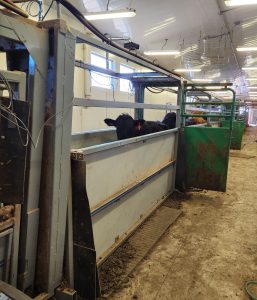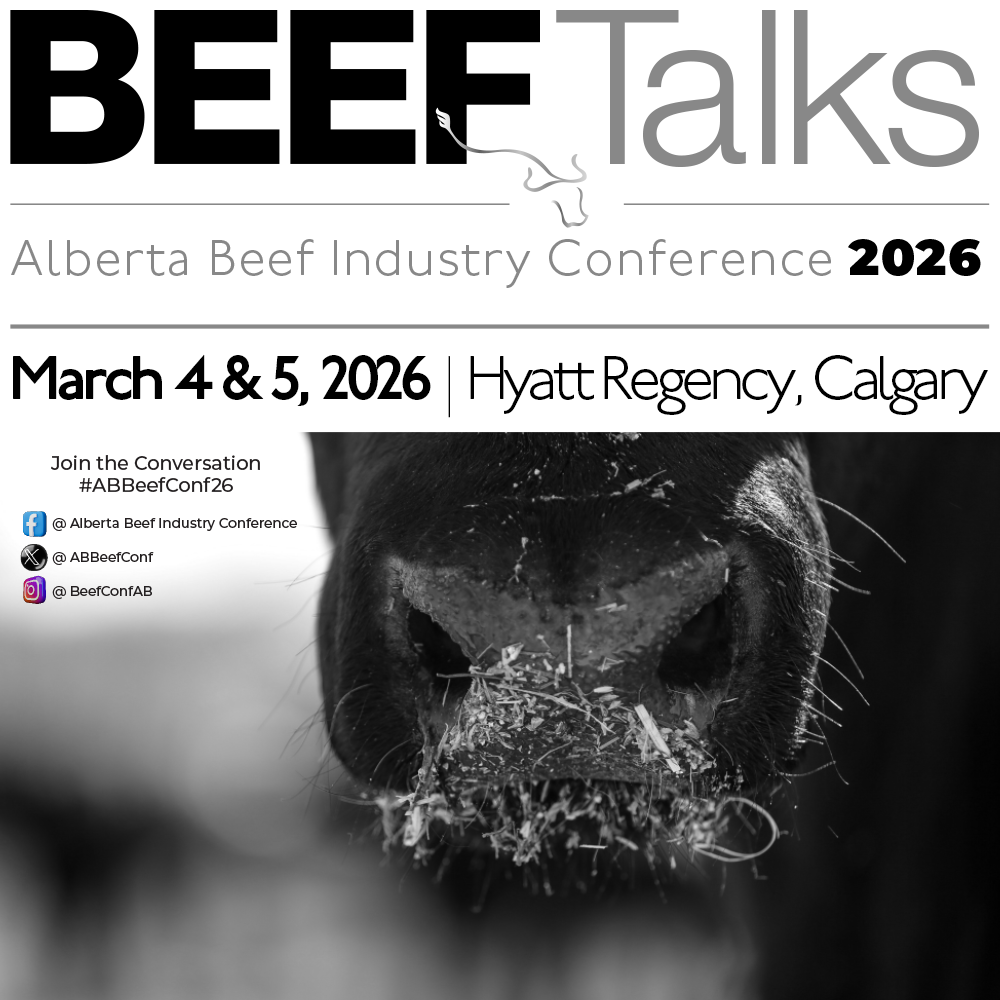AB Direct - Steers
Rail: 492.00-493.50 FOB feedlot (last week)
AB Direct - Heifers
Rail: 492.00-493.50 FOB feedlot (last week)
US Trade- Steers
Rail: 355.00-363.00 (IA, NE) last week
US Trade - Heifers
Rail: 355.00-363.00 (IA, NE) last week
Canadian Dollar
0.19

ABP Research Showcase Highlights | Connecting grazing environments with the rumen microbiome
This is the seventh in a series of articles highlighting a selection of ABP-supported research projects that were featured at our Research Showcase in February 2023. Find the previous articles here.
When it comes to studying the rumen microbiome of cattle, University of Alberta researchers are old hands.
“We have done research to look at how the microbiome contributes to cattle feed efficiency (and) methane emissions,” said Leluo Guan of the university’s Faculty of Agriculture, Life, and Environmental Sciences.

“We also recently identified rumen microbes are heritable, and those heritable rumen microbes are indeed associated with the genotypes of the cattle that have higher or lower feed efficiency.”
But the rumen microbiome, which encompasses all the microorganisms within the rumen, still has many facets to uncover, particularly around how individual differences in an animal’s rumen microbiome contribute to their productivity and health.
Of the four rumen microbial groups — bacteria, archaea, protozoa, and fungi — existing research tends to focus on bacteria, which is responsible for fibre degradation and fermentation in the rumen. However, archaea are getting more attention due to their role in methane production. As well, a recent study of dairy cattle in Spain indicated that protozoa and fungi play a larger role in producing methane, too.
Using this and previous U of A studies as background, Guan wanted to connect differences in grazing environments and feed efficiency to the diversity within the rumen microbiome.
“We actually identified when the cattle are more feed efficient, they actually have less diverse rumen microbiota. They actually have less diversity and as well as less activity compared to the cattle who are less feed efficient,” she said.
“This indicates the rumen microbes actually always behave differently when they are even fed the same diet, raised in the same environment.”
Guan set out to study changes within the rumen microbiome’s composition and function in beef females grazing tame pasture, native pasture in summer, and dormant native pasture in fall. As well, her research covered how differences in feed efficiency affect microbiome changes in these grazing environments.
Over two and a half years, Guan and her team collected rumen fluid samples and fecal samples on groups of cows and heifers with differing residual feed intake while under the three different grazing environments.
The samples have been analyzed through a variety of methods, including microbial profiling using marker genes for the four rumen microbial groups and microbial population quantification.
While the data analysis for this project is ongoing, preliminary findings show that the changes resulting from the grazing environments varied between each microbial group. For example, in terms of microbial composition, there were less changes in the archaea than the bacteria.
Another key observation was that when cattle were grazed on tame pasture, the amount of bacteria and archaea present increased.
As well, differences were observed in the microbial population between cows and heifers in each grazing type, and early data suggests that cattle sampled may produce less methane or be more feed efficient when grazing tame pasture, but Guan noted that more analysis is needed here.
Areas in this study still to be analyzed include identifying the rumen microbial markers related to feed efficiency and understanding the changes in protozoa and fungi populations, among other topics.
“We are (continuing to collect) samples for some of those cows this year…so we can actually add more data to this particular project to identify the key rumen microbes that affecting performance in the grazing system,” said Guan.
When looking ahead to how this research may be applied at a practical level, Guan is interested in exploring how feed additives can be used to manipulate the rumen microbiome, as well as genetic selection for a more favourable microbiome.
“We do see the potential genetic effect, so we can potentially also breed cattle (by selecting) the more efficient rumen microbes, so contribute to more feed efficiency and less methane emissions.”
This study was partially funded by Alberta Beef Producers. To learn about more ABP-supported studies and find fact sheets for completed and in-progress projects, visit our Research and Development webpage.


